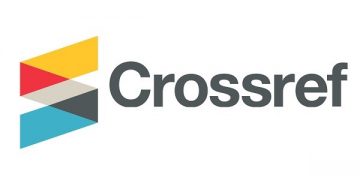The Influence of Social Media Language on Generation Z Identity in Indonesia
DOI:
https://doi.org/10.61722/jmia.v2i1.3740Keywords:
Pengaruh Media Sosial, Bahasa, Identitas Gen ZAbstract
This study explores the impact of social media language on identity formation among Generation Z in Indonesia, a demographic that has grown up in a digital landscape characterized by extensive online interactions. With approximately 202 million internet users in Indonesia as of 2023, social media platforms such as Instagram, TikTok, and Twitter have become vital arenas for self-expression and cultural dialogue. The research employs a qualitative approach, utilizing semi-structured interviews, focus group discussions, and online observations to gather rich, contextual data from urban youth. Findings reveal that the dynamic linguistic landscape of social media—marked by the use of slang, memes, and code-switching—plays a crucial role in shaping personal and collective identities. Additionally, the study highlights the influence of local and global cultural trends, as well as the role of social media influencers in shaping youth perceptions of identity. The implications of these findings extend to educators, policymakers, and mental health professionals, emphasizing the need for a nuanced understanding of the challenges and opportunities presented by social media in the identity formation process.
References
Abidin, C. (2016). Communicative creators: The role of influencers in social media. Media International Australia, 161(1), 86-100.
Bowen, G. A. (2009). Document analysis as a qualitative research method. Qualitative Research Journal, 9(2), 27-40. https://doi.org/10.3316/QRJ0902027
Braun, V., & Clarke, V. (2006). Using thematic analysis in psychology. Qualitative Research in Psychology, 3(2), 77-101. https://doi.org/10.1191/1478088706qp063oa
Bucholtz, M., & Hall, K. (2005). Identity and interaction: A sociocultural linguistic approach. Discourse Studies, 7(4-5), 585-614.
Creswell, J. W. (2013). Qualitative inquiry and research design: Choosing among five approaches (3rd ed.). SAGE Publications.
Creswell, J. W., & Poth, C. N. (2018). Qualitative research: Designing a qualitative study (4th ed.). SAGE Publications.
Denzin, N. K. (1978). The research act: A theoretical introduction to sociological methods. McGraw-Hill.
Denzin, N. K., & Lincoln, Y. S. (Eds.). (2011). The SAGE handbook of qualitative research (4th ed.). SAGE Publications.
Fereday, J., & Muir-Cochrane, E. (2006). Demonstrating rigor using thematic analysis: A hybrid approach of inductive and deductive coding and theme development. International Journal of Qualitative Methods, 5(1), 80-92. https://doi.org/10.1177/160940690600500107
Festinger, L. (1954). A theory of social comparison processes. Human Relations, 7(2), 117-140.
Gee, J. P. (2005). An introduction to discourse analysis: Theory and method. Routledge.
Geertz, C. (1973). The interpretation of cultures: Selected essays. Basic Books.
Gumperz, J. J. (1982). Discourse strategies. Cambridge University Press.
Helsper, E. J., & Eynon, R. (2010). Digital natives: Where is the evidence? British Educational Research Journal, 36(3), 503-520.
Hepp, A. (2013). Cultures of mediatization. Polity Press.
Hidayati, N. (2021). Cultural identity in the age of social media: The case of Indonesian youth. Journal of Southeast Asian Studies, 52(3), 456-472.
Hine, C. (2000). Virtual methods: Issues in social research on the internet. Berg.
Krueger, R. A., & Casey, M. A. (2015). Focus groups: A practical guide for applied research (5th ed.). SAGE Publications.
Kusumaningrum, D. (2022). Language and identity in Indonesian LGBTQ+ activism. Indonesian Journal of Cultural Studies, 5(2), 123-135.
Kvale, S., & Brinkmann, S. (2009). InterViews: Learning the craft of qualitative research interviewing (2nd ed.). SAGE Publications.
Lincoln, Y. S., & Guba, E. G. (1985). Naturalistic inquiry. SAGE Publications.
Merriam, S. B., & Tisdell, E. J. (2015). Qualitative research: A guide to design and implementation (4th ed.). Jossey-Bass.
McLuhan, M. (1964). Understanding media: The extensions of man. McGraw-Hill.
Miller, D., et al. (2021). How the world changed social media. UCL Press.
Morgan, D. L. (1998). The focus group guidebook. SAGE Publications.
Patchin, J. W., & Hinduja, S. (2020). Cyberbullying research summary: Cyberbullying and mental health. Retrieved from Cyberbullying Research Center.
Patton, M. Q. (2015). Qualitative research and evaluation methods (4th ed.). SAGE Publications.
Postman, N. (1992). Technopoly: The surrender of culture to technology. Knopf.
Prensky, M. (2001). Digital natives, digital immigrants. On the Horizon, 9 (5), 1-6.
Rakhmat, J., & Sari, D. (2020). Social media and youth identity: A study of social media usage among Indonesian youth. Indonesian Journal of Communication Studies, 5(1), 45-60. https://doi.org/10.24198/ijcs.v5i1.12345
Saldaña, J. (2016). The coding manual for qualitative researchers (3rd ed.). SAGE Publications.
Silverman, D. (2016). Qualitative research (4th ed.). SAGE Publications.
Sari, R. (2020). The impact of globalization on local languages in Indonesia. Journal of Language and Culture, 11(1), 45-60.
Tajfel, H. (1982). Social identity and intergroup relations. Cambridge University Press.
Tajfel, H., & Turner, J. C. (1979). An integrative theory of intergroup conflict. In W. G. Austin & S. Worchel (Eds.), The social psychology of intergroup relations (pp. 33-47). Brooks/Cole.
Twenge, J. M. (2019). iGen: Why today's super-connected kids are growing up less rebellious, more tolerant, less happy—and completely unprepared for adulthood. New York: Atria Books.
Yin, R. K. (2018). Case study research and applications: Design and methods (6th ed.). SAGE Publications.
Statista. (2023). "Number of Internet Users in Indonesia from 2017 to 2023." Retrieved from Statista.
Downloads
Published
Issue
Section
License
Copyright (c) 2024 JURNAL MULTIDISIPLIN ILMU AKADEMIK

This work is licensed under a Creative Commons Attribution-ShareAlike 4.0 International License.











